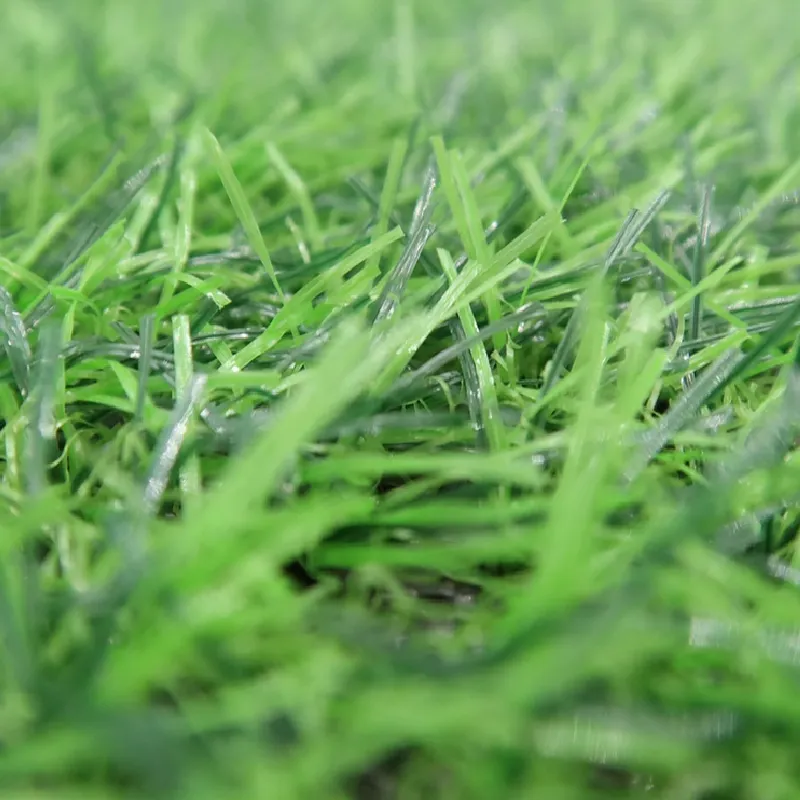
- Afrikaans
- Arabic
- Belarusian
- Bengali
- Czech
- Danish
- Dutch
- English
- Esperanto
- Estonian
- Finnish
- French
- German
- Greek
- Hindi
- Hungarian
- Icelandic
- Indonesian
- irish
- Italian
- Japanese
- kazakh
- Rwandese
- Korean
- Kyrgyz
- Lao
- Latin
- Latvian
- Malay
- Mongolian
- Myanmar
- Norwegian
- Persian
- Polish
- Portuguese
- Romanian
- Russian
- Serbian
- Spanish
- Swedish
- Tagalog
- Tajik
- Thai
- Turkish
- Turkmen
- Ukrainian
- Urdu
- Uighur
- Uzbek
- Vietnamese
Artificial Turf Innovations for Modern Stadiums Enhancing Performance and Sustainability
Nov . 08, 2024 01:11 Back to list
The Rise of Artificial Grass in Stadiums A Game Changer for Sports Facilities
In recent years, artificial grass has transformed the landscape of sports facilities worldwide, particularly stadiums. This innovation has gone beyond mere aesthetics; it has become a game changer for the way sports are played, how facilities are maintained, and the overall experience of spectators and athletes alike.
The Benefits of Artificial Grass
One of the primary advantages of artificial grass is its durability. Traditional grass surfaces are susceptible to wear and tear, especially in high-traffic areas. Rain, snow, and extreme temperatures can render natural grass unusable for weeks. In contrast, artificial grass can withstand various weather conditions, offering a consistent playing surface throughout the year. This reliability is essential for stadiums that host multiple events, including football matches, soccer games, and concerts.
In addition to durability, artificial grass requires significantly less maintenance compared to natural grass. Stadiums often grapple with the logistical challenges of mowing, watering, and fertilizing natural turf, which can be both time-consuming and costly. With artificial surfaces, maintenance is minimal; it often involves regular cleaning and occasional infill replacement. This reduction in upkeep not only cuts costs but also allows facility managers to allocate resources to other crucial areas, such as fan engagement and game-day operations.
Enhanced Performance and Safety
Another significant benefit of artificial grass is its impact on player performance and safety. Modern artificial turf is designed to mimic the natural playing surface closely, often featuring advanced technology that provides optimal traction and shock absorption. These features can reduce the risk of injuries, a growing concern in professional sports. Studies indicate that players on artificial surfaces experience fewer ankle and knee injuries, which leads to improved overall player health and longevity in their careers.
Moreover, the design of artificial grass fields allows for greater consistency in gameplay. Athletes can trust the surface beneath their feet, enabling them to execute complex maneuvers without the fear of unpredictable bounces or slips that might occur on natural grass. This reliability can lead to higher performance levels, both individually and as a team.
stadium artificial grass

Environmental Considerations
Despite concerns about the environmental impact of artificial grass, advancements in technology have led to more sustainable options. Manufacturers are now producing eco-friendly synthetic grasses made from recycled materials. Additionally, many facilities are implementing water-saving practices by reducing irrigation needs. These strides towards sustainability are essential, particularly as the global community becomes increasingly aware of environmental issues.
The Future of Stadium Design
As more stadiums embrace artificial grass, it transforms architectural considerations in stadium design. Facilities are now being equipped with state-of-the-art drainage systems to enhance the performance of artificial surfaces. Architects and designers are working to create multi-purpose venues that can adapt to various sports and entertainment events without compromising the quality of the playing surface or the fan experience.
Stadiums like the Mercedes-Benz Stadium in Atlanta and the Levi's Stadium in San Francisco showcase how artificial grass can coexist with other modern innovations. These facilities not only offer fans a spectacular viewing experience but also integrate cutting-edge technology to enhance gameplay and sustainability.
Conclusion
Artificial grass has undoubtedly revolutionized stadiums, providing numerous benefits that cater to the demands of modern sports. Its durability, lower maintenance costs, enhanced safety, and environmental sustainability make it an appealing choice for sporting facilities. As technology continues to advance and public perception shifts, we can expect to see more stadiums adopting artificial grass as their preferred playing surface. This evolution will undoubtedly shape the future of sports, changing how athletes train, compete, and engage with their fans. The integration of artificial grass is not merely a trend; it’s a lasting evolution in the world of sports infrastructure.
-
The Benefits of Artificial Turf for Indoors
NewsJul.15,2025
-
How Artificial Grass Suppliers Ensure Quality Products
NewsJul.15,2025
-
Artificial Grass and Pets: A Space for Relaxation
NewsJul.08,2025
-
Balcony & Outdoor Decoration with Artificial Grass
NewsJul.08,2025
-
Best Indoor Artificial Grass for Home
NewsJul.07,2025
-
Best Pet Turf for Dogs: Safe & Durable Artificial Grass Options
NewsJul.07,2025
Products categories









